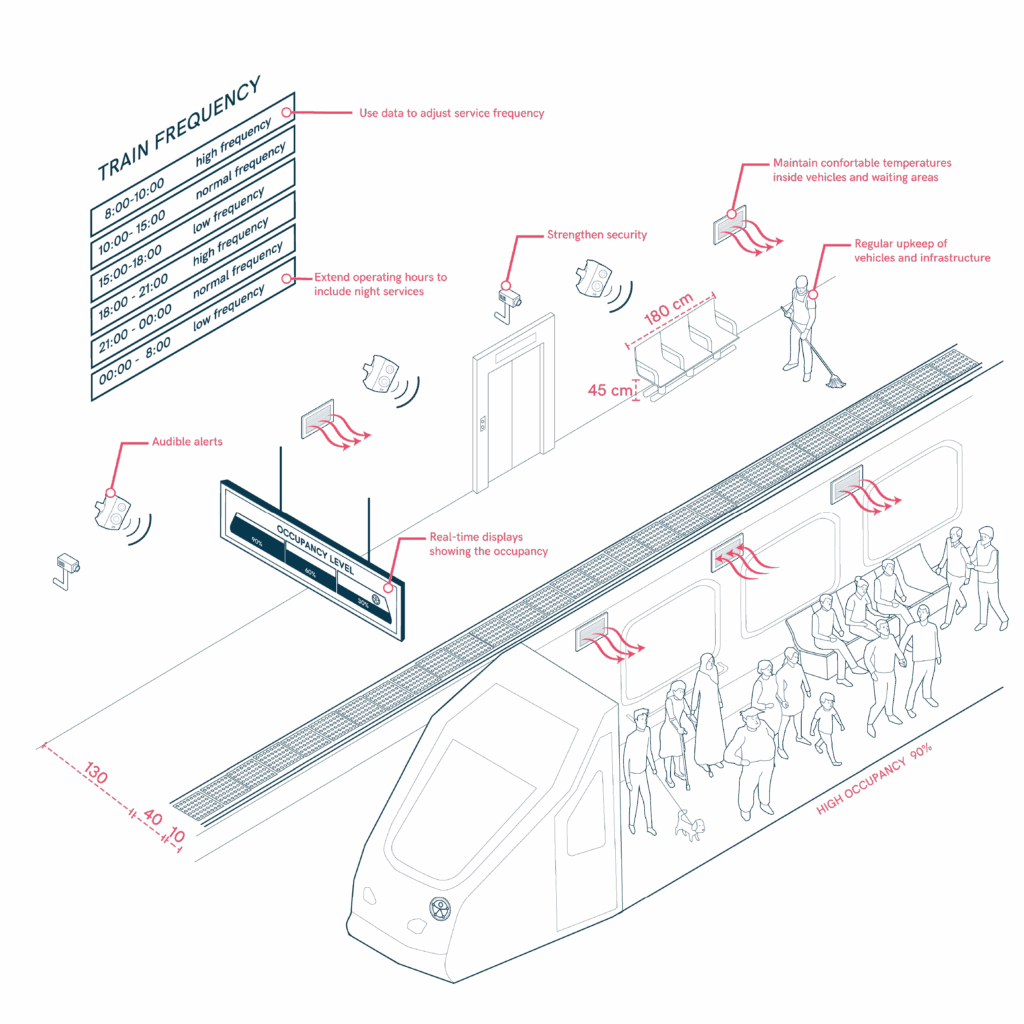Optimizing Public Transport for Comfort and Well-being
Efficient, comfortable, and accessible public transport is essential for improving the well-being of all users. Thoughtful design, real-time information, and ongoing maintenance of transport networks can significantly reduce stress and enhance user experience. Incorporating features that inform about vehicle occupancy, accessibility, and schedules helps people plan their journeys better and promotes inclusive mobility. Additionally, security measures and environmental controls ensure safe and pleasant travel at any time of day.

- Implement real-time displays showing the occupancy level of buses, trains, and individual carriages to help users choose less crowded options.
- Use data to djust service frequency dynamically based on demand to prevent overcrowding and reduce travel stress.
- Equip waiting areas with visual and audible alerts announcing incoming transport, so passengers do not need to stand or strain to see approaching vehicles.
- Clearly indicate which carriages or entrances are wheelchair-accessible to facilitate smooth boarding for users with mobility aids.
- Install heating and cooling systems inside vehicles and waiting areas to maintain comfortable temperatures throughout the year.
- Extend operating hours to include night services, ensuring safe and reliable transport for late travelers.
- Strengthen security in stations, including access points and surrounding areas, to provide safe environments for all users.
- Maintain regular upkeep of vehicles and infrastructure to ensure reliability, safety, and cleanliness.
Sources
- https://www.t-l.ch/collectivites/guide-des-amenagements-pour-les-transports-publics-routiers-tl
- https://www.leitfadenbarrierefreiesbauen.de/fileadmin/downloads/archiv/barrierefreies_bauen_leitfaden_en_bf_version2.pdf
- https://unhabitat.org/sites/default/files/2020/06/indicator_11.2.1_training_module_public_transport_system.pdf
- https://accessible-eu-centre.ec.europa.eu/content-corner/digital-library/en-172102021-accessibility-and-usability-built-environment-functional-requirements_em
